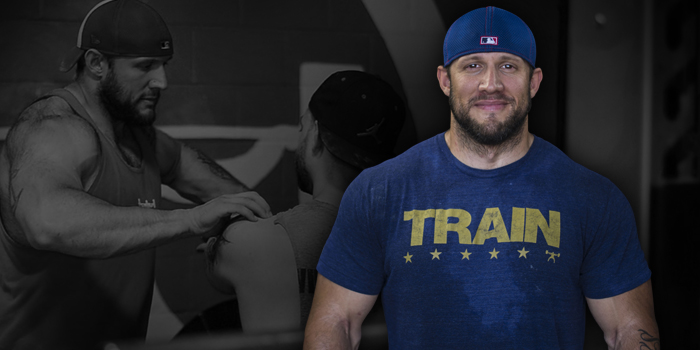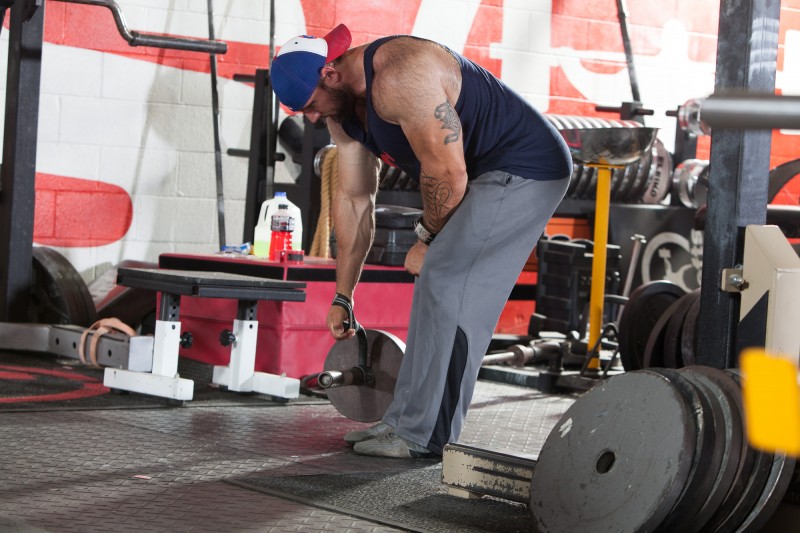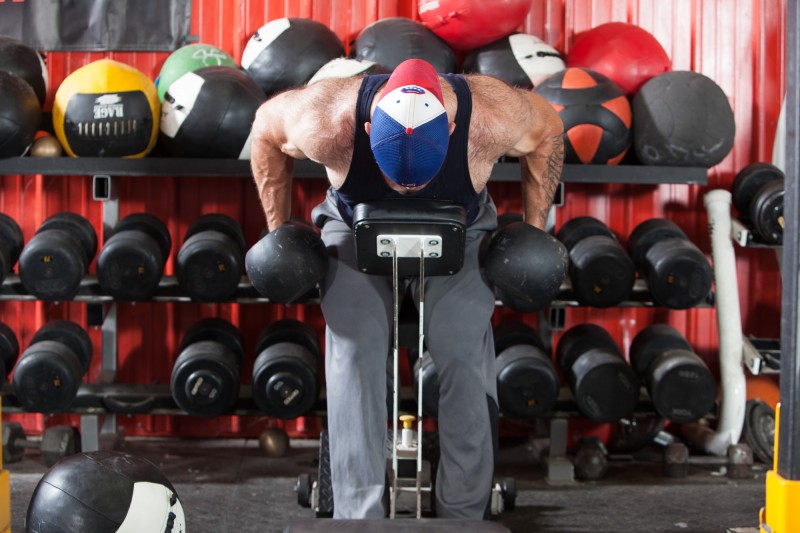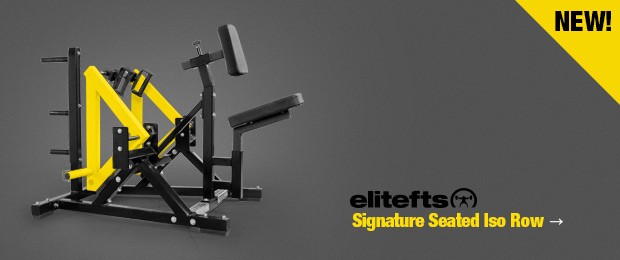
I constantly struggle to shut off my brain when in a training environment. What can I be doing better? How can that person better there training? What are they missing? Hell, what is much of the training population, relating to hypertrophy, missing?
I consciously made the decision to keep an eye out for the answers, and what I came up with was the following:
The Three I’s
- Irradiation
- Intent
- Inventory
Each of these is just as essential to making hypertrophy gains as are sets, reps, progressive overload, etc. In fact, before you can execute those, you must first master the three I’s.
Irradiation
Irradiation is not a new term. It is predominantly used in the rehabilitation field when referring to Sherrington’s Law of Irradiation. There are multiple Sherrington’s laws, but we will refer to this one for the purposes of this article. Sherrington’s Law of Irradiation states the following:
"A muscle working hard recruits the neighboring muscles, and if they are already part of the action, it amplifies their strength. The neural impulses emitted by the contracting muscles reach other muscles and enhance the desired contraction."
We will use the famous example by Pavel to further make my point. Here is how he put it:
“Make a tight fist. Where do you feel the tension? Your forearm and biceps, right? Even tighter! White knuckles! Do you feel your shoulder and even chest flexing too? When the demand for force increases, other muscles jump in on the action. Like a stone dropped in the water sends ripples across the surface, tension spreads—irradiates—from the muscle directly responsible for the job at hand towards others. The bigger the stone, the taller are the waves and the further they spread!
"It states that a muscle working hard recruits the neighborhood muscles, and if they are already a part of the action, it amplifies their strength! Not by cheating, as some complement their barbell curls with a back swing, but by ‘cheering’. The neural impulses emitted by the contracting muscle reach other muscles and ‘turn them on’ as electric current starts a motor.”

Now, when most individuals are referring to irradiation, they are referring to gripping a barbell or dumbbell. However, this principle can and should be applied to every hypertrophy training movement. Here are a couple examples for back training. You can apply the principle to all body parts.
When it comes to back training you have three main categories of movements: horizontal pull, vertical pull, and your compound closed chain movements.
Horizontal Pull
Most of the time these movements are supported — either chest-supported, or single-arm supported. Most people when pulling in a chest-supported row movement tend to overshoot the weight. It’s because of this that they end up pulling themselves away via low back extension or leg drive, pending the movement. You are essentially decreasing irradiation and your ability to create tension, which tells the muscle it’s safe to contract. Not only that, but you also create a longer distance than the exercise was intended for.
Here’s what you should do instead: With your opposite hand (if single-arm) or driving your chest into the pad (if bilateral) pull yourself into the bench as hard as you possibly can the entire set. This creates more tension throughout the back and assists the main muscles being targeted.
Vertical Pull
The principle is the same exact here. With vertical pulling movements, you want to drive yourself, using your feet, into the ground as hard as possible. If it’s a pull-down movement with a chest-support feature, do both. If it’s a pull-up movement that’s not supported, that’s when the original grip principle comes into play. Squeeze the shit out of it.
Compound Movements
These are your barbell bent-over rows, deadlifts, rack pulls, etc. What if I told you that 99.9% of people are worried about moving the barbell first and pay zero attention to their full body tightness? Learning to create head-to-toe tightness will not only increase your strength via neural tightness but will also burn more calories. Increased irradiation equals more muscles being contracted. More contractions equal more metabolic processes. A higher amount of metabolic process equals more calories burned.
Now, of course, there are additional movements that lie outside the spectrum. This is where you can get creative and see what works best for you.
Intent
You need the intent or purpose to complete an action. In this case, an exercise. This is where things get interesting. The world is full of egos that want to get stroked. Intent goes out the window and trying to lift the most weight possible regardless of purpose, form, and function becomes goal numero uno. Granted, this can be due to a lack of education, but you can’t really use that as an excuse, as the internet has an answer for everything (a la this article here). This is probably the number one thing I see missing most when examining someone’s training age, technique, and so forth.
So how do we fix this?
- Drop the ego at the door. Understand and accept that your best gains will be made when your intent is 100% on every rep, every set, during every session. If you can’t maintain this, decrease your volume, weight, intensity, etc., until you can.
- Do some research. There are experts at every avenue that can accentuate better than I can as to how to properly execute an exercise with cues that will make it click.
- Learn how to squeeze a muscle through all its ranges of motion: shortened, lengthened, and middle range. For example, stand up and squeeze/flex your quads as hard as you can. Now, slowly descend into a body squat as low as you can while maintaining that tension. Return to the upright position while still squeezing until it hurts. Great, now do that in every loaded quad movement and do the same with hamstrings.
- Train with people who are smarter, bigger, and willing to teach.
Intent and irradiation go hand in hand. You cannot have one without the other. It’s like a peanut butter and jelly sandwich; you can’t have one without the other, and if you do you're just weird and probably shouldn’t be training anyways.
Inventory
After you begin to master the above two principles, you can then start to build. During each session you should be creating an inventory, meaning you should be taking notes on the following:
- What worked?
- What didn’t work?
- What felt good?
- What felt like shit?
- Are your numbers going up or down?
You get the point. You need to create an optimal inventory of your training, including exercises, rest periods, PRs, and so forth. Some exercises when using correct intent and irradiation will just feel better than others. That’s probably an exercise you want to include into your training on a frequent basis.
I see too many people moving from exercise to exercise without giving their body time to truly learn a movement and what that movement can do for their hypertrophy. Variety is good, but variety is only needed when you have been training for over a decade and you’ve mastered intent and irradiation with all the basic exercises. I’ve been training with weights since I was 15. I’m 32 now, and I still stick to the basics with some occasional “flashy” stuff. Be patient and the growth will happen.












Too many people just turn up to the gym, go through the motions and leave until the next day.... see no real results. Literally wasting their money on gym memberships and those protein shakes everybody says they should drink. More people need to educate themselves by reading these types of articles!!